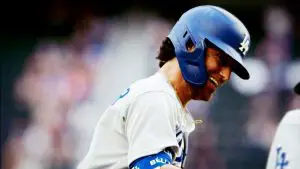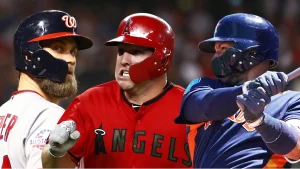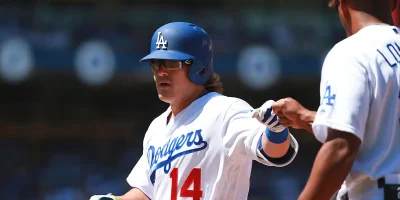When it comes to keeping baseball players safe and protected, getting the right helmet fit is absolutely crucial. In the realm of baseball safety and player protection, finding the ideal fit for a helmet is paramount. Ensuring the appropriate baseball helmet sizes by age is a fundamental aspect of safeguarding players during the game.
Tailoring the size of a baseball helmet according to a player’s age — commonly referred to as baseball helmet sizes by age — not only optimizes comfort but also enhances overall safety on the field.
This article explores the guidelines and considerations associated with baseball helmet sizing in relation to different age groups, shedding light on the crucial role proper sizing plays in promoting a safe and enjoyable baseball experience.
How are baseball helmet sizes determined for different ages?

Baseball helmet sizes are determined based on the head circumference and head shape of the individual player, rather than strictly by age. It’s important for a baseball helmet to fit properly to provide adequate protection to the player.
Here’s how baseball helmet sizes are typically determined:
- Measure Head Circumference: The first step is to measure the player’s head circumference using a flexible measuring tape. This measurement is usually taken just above the eyebrows and ears.
- Consult Sizing Charts: Baseball helmet manufacturers provide sizing charts that correlate head circumference measurements to helmet sizes. These charts help match the measured head circumference to the appropriate helmet size.
- Try on Helmets: Players should try on helmets of the determined size to ensure a snug and comfortable fit. The helmet should fit securely on the head without being too tight or too loose.
- Adjustment Features: Modern baseball helmets often come with adjustment features, such as straps and padding that can be adjusted to fine-tune the fit for the individual player.
- Consider Head Shape: Different individuals may have different head shapes, so it’s important to consider the overall fit and shape of the helmet on the player’s head. A properly fitting helmet should cover the forehead, temples, and back of the head while providing adequate protection.
- Age and League Guidelines: While helmet sizes are primarily determined by head circumference and fit, there may be general guidelines for helmet sizes based on age or league requirements. However, these guidelines are not a substitute for ensuring a proper fit based on head circumference and shape.
It’s essential for players, coaches, and parents to prioritize the safety and protection of the player by selecting a properly fitting baseball helmet. A well-fitted helmet can significantly reduce the risk of head injuries while playing the sport.
What are the helmet size guidelines for youth players?
Helmet size guidelines for youth baseball players can vary slightly based on different leagues, organizations, and manufacturers. However, here are some general guidelines to give you an idea of how helmet sizes are typically associated with youth age groups:
- T-ball (Ages 4-6):
-
- Helmet Size: Extra Small (XS) or Small (S)
- Head Circumference: Up to 20.5 inches (approximately)
- Coach Pitch (Ages 6-8):
-
- Helmet Size: Small (S) or Medium (M)
- Head Circumference: 20.5 to 22.5 inches (approximately)
- Kid Pitch (Ages 8-12):
-
- Helmet Size: Medium (M) or Large (L)
- Head Circumference: 21.5 to 23.5 inches (approximately)
- Teen (Ages 13-18):
-
- Helmet Size: Large (L) or Extra Large (XL)
- Head Circumference: 22.5 to 24.5 inches (approximately)
It’s crucial to emphasize that these guidelines are approximate and can vary based on the individual’s head shape and personal preference. Properly measuring the player’s head circumference and trying on helmets to ensure a snug and comfortable fit is essential. The helmet should sit level on the head, cover the forehead, and be securely fastened to provide optimal protection.
Always refer to the specific helmet manufacturer’s sizing chart for the most accurate guidance and consult with your league or organization for any additional regulations or requirements regarding helmet sizing for youth players. Safety should be the top priority when selecting a helmet for a young baseball player.
Are there league rules for helmet sizes in youth baseball?

Yes, many youth baseball leagues have specific rules and regulations regarding helmet sizes to ensure the safety and proper protection of players. These rules typically dictate the acceptable helmet sizes and may even specify requirements for certifications and standards that the helmets must meet. Here are some common league rules related to helmet sizes in youth baseball:
- NOCSAE Certification:
-
- Many youth baseball leagues require helmets to have certification from the National Operating Committee on Standards for Athletic Equipment (NOCSAE). This certification ensures that the helmet meets safety standards and can provide adequate protection against impacts.
- Age-Appropriate Sizing:
-
- Leagues often specify that players must wear helmets that are appropriate for their age group. This means that younger age groups (e.g., T-ball, coach pitch) should wear helmets designed for smaller head sizes.
- Proper Fit:
-
- Rules may emphasize that helmets must fit properly and securely on the player’s head. A helmet that is too loose or too tight may not provide adequate protection.
- Mandatory Use:
-
- Leagues usually mandate the use of helmets for all players while batting, running the bases, and in the on-deck circle. This includes players of all ages, emphasizing safety for both youth and adult players.
- Checking for Compliance:
-
- Coaches, umpires, or league officials may conduct inspections to ensure that players are using appropriate-sized helmets that meet league standards and NOCSAE certification.
- Penalties for Non-Compliance:
-
- Penalties, warnings, or player disqualification may be enforced if a player is found using a helmet that does not meet the league’s specifications or standards.
It’s important for coaches, parents, and players to familiarize themselves with the specific helmet rules and regulations of their respective youth baseball league.
Compliance with these rules helps maintain a safe playing environment and reduces the risk of head injuries during games and practices. Additionally, using properly sized and certified helmets is a crucial aspect of responsible participation in the sport.
How do high school players’ helmet sizes differ?
High school players’ helmet sizes typically differ from youth sizes due to the larger head circumferences of older individuals. High school players generally require larger helmets to ensure a proper and secure fit, providing adequate protection during baseball games and practices. Here are some key points regarding helmet sizes for high school baseball players:
- Head Circumference Range:
-
- High school players have head circumferences that fall within a broader range compared to younger age groups. The head sizes are more in line with adult sizes, necessitating larger helmet options.
- Helmet Size Options:
-
- High school players typically wear helmet sizes such as Medium (M), Large (L), Extra Large (XL), and occasionally XXL, depending on the specific head size of the individual.
- Fit and Adjustment:
-
- It’s essential for high school players to ensure that their helmets fit securely and comfortably. Most helmets come with adjustment features, such as straps and padding, allowing players to fine-tune the fit for optimal comfort and protection.
- Safety Standards:
-
- Helmets for high school players must meet safety standards and certifications set by organizations like the National Operating Committee on Standards for Athletic Equipment (NOCSAE) to provide adequate protection against impacts.
- Durability and Construction:
-
- Helmets for high school players are designed to withstand the rigors of high school-level play, which involves faster pitches and potentially harder hits. They are constructed with durable materials to ensure longevity and effectiveness.
- League and School Regulations:
-
- High school baseball leagues and individual schools often have specific guidelines and regulations regarding helmet sizes, requirements for NOCSAE certification, and the type of helmets that players are allowed to use.
It’s crucial for high school players, coaches, and parents to prioritize safety by selecting helmets that fit properly and comply with the rules and regulations of the league or school. Additionally, players should regularly check their helmet’s fit and condition to ensure ongoing safety and protection on the field.
Recommended:
- What does 7 inches look like?
- 15 Things that weigh 20 pounds
- Walmart Wallet Photo Size Options and Tips
- What is 4 inches long?
Conclusion
Baseball Helmet Sizes by Age: Ensuring proper helmet sizing is essential for player safety in baseball. For younger players, such as children and pre-teens, smaller helmet sizes are crucial to provide a snug fit that adequately protects the head.
As players grow into adolescence and adulthood, larger helmet sizes become necessary to accommodate their developing heads and ensure continued safety and comfort during gameplay. It’s vital for players of all ages to regularly check and update their helmet size to ensure optimal protection on the field.


